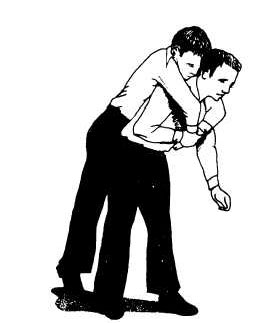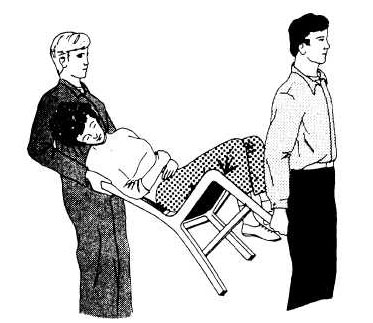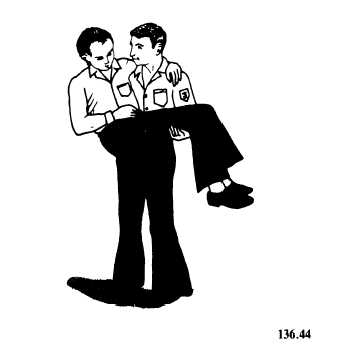you roll and pull the casualty onto your back.
Raise up on your knees, using your free arm for balance and support. Hold both the casualty’s wrists close against your chest with your other hand.

Figure 4-88.—Packstrap carry.
Lean forward as you rise to your feet, and keep both of your shoulders under the casualty’s armpits.
Do not attempt to carry a seriously injured person by means of the pack-strap carry, especially if the arms, spine, neck, or ribs are fractured.

Figure 4-89.—Chair carry.
CHAIR CARRY.— The chair carry can often by used to move a sick or injured person away from a position of danger. The casualty is seated on a chair, as shown in figure 4-89, and the chair is carried by two rescuers. This is a particularly good method to use when you must carry a person up or down stairs or through narrow, winding passageways. It must NEVER be used to move a person who has an injured neck, back, or pelvis.

Figure 4-90.—One-person arm carry.
ARM CARRIES.— There are several kinds of arm carries that can be used in emergency situations to move an injured person to safety. Figure 4-90 shows how one person can carry the casualty alone. However, you should never try to carry a person this way who is seriously injured. Unless considerably smaller than you are, you will not be able to carry the casualty very far by this method.
